Greening the cities in Netherlands, part2
The second week had lots of time reserved for the challenge. Everybody was drawing, planning, searching information and making plant lists the whole week, with the pace and pressure getting bigger towards the end of the week. We Finns bought a set of watercolors and paper to illustrate our visions, and many hours in a couple of evenings were spent at the hostel drawing and coloring. It was such a great experience to be able to do a plan that actually had meaning, for there would be a jury in Friday that will decide on a best vision. All the plans will be presented to the Houten municipality and they will incorporate the things they like in the central area of Houten. So there is a very good chance, that our plans and designs will be realised!
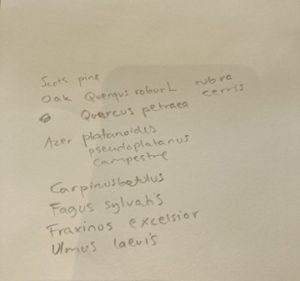
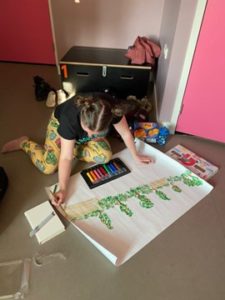
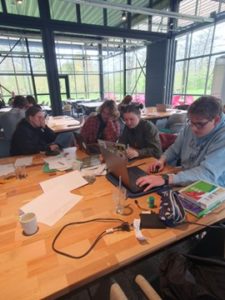
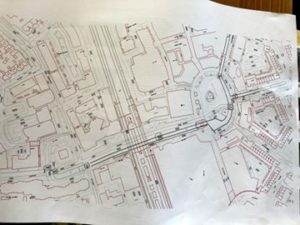
Four pictures above: there was lots of planning and drawing, schematics of areas and lists of plants and of course coffee.
We also had two excursions, to Utrecht to get to know the local fauna with the guidance of ecologists, and to Veenendaal to get acquainted with Royal Ginkel Groep, the largest landscaping company in the Netherlands and the co-operation company for the Urban Greening Weeks. We also had some pitch training from a pitch lecturer from EPLUG, which proved very useful when thinking about how to present our stories to the jury and how to present ourselves in the stage too.
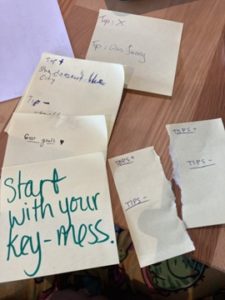
Up: In the pitch training lecture, we all did a short pitch to introduce ourselves and got feedback from others in form of tips and tops.
The fauna excursion was very lovely! We got to know a lot about local bats and how the city of Utrecht takes in account this super important mosquito eating species. We learned how the city gives space for natural darkness by keeping the parks all dark at night, in so doing taking care of the important biodiversity that dwells and thrives in the dark. We learned about the rebuilding of the chunnels and what was taken in account biodiversity vice when doing the plans (for example an empty space under a park area next to the chunnel was saved and given a small letterbox ‘opening near the waterline, so that waterbats could use that space for daytime rest and hibernation. The banks of the chunnel were fixed so that the ducks and the coots and other animals can easily get ashore from the water. For the kingfisher there was also made some nesting places and look-out branches in the other side of the city. We saw lots of local waterplants and had plenty of ideas for our challenge. We also went to see a fish doorbell in the chunnel, where there is a camera filming underwater. The footage is a livestream to a website, where anyone can see if fish are present and then press a button when they see a fish, and that’s the doorbell! It was a fun concept, and you can go and see the stream and push the doorbell for the fishes here: https://visdeurbel.nl/
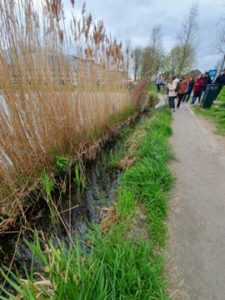
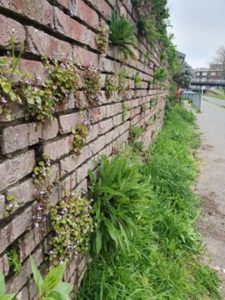
Two pictures above: On the fauna tour we learned a lot about local native species and how to incorporate and take them in account in urban environments.
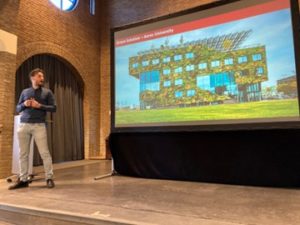
Above: Lars van Ginkel presenting his company and what they do. Royal Ginkel Groeps Veenendaal office is set in an old church.
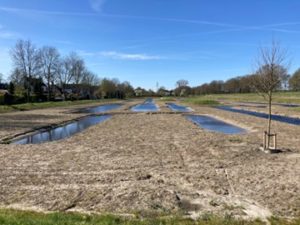
Above: the green area that will look like a swamp when finished.
The day in Veenendaal was a lovely one too. The weather was great and from the train to Veenendaal we saw some natural forests, that looked very lovely and light. At the Ginkel Groeps office we got a short presentation on what the company does and how they implement biodiversity in their projects, and then we went to see two sites they made nearby. The other one was a green area that was made to look like swamp. It was not yet quite ready, but when it is it will have plenty of natural meadow plants that thrive in moister conditions growing there. The second one was a residental area that had more formal planting at the residential area itself, but then also a natural looking park with a waterway.
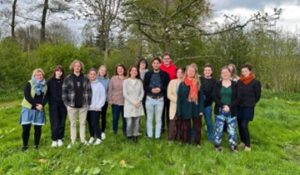
Above: A group picture with Lars van Ginkel in the middle.
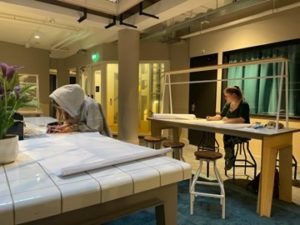
Above: The last night was spent in the hostel common room, drawing.
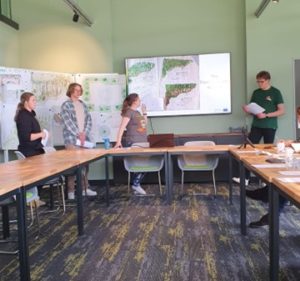
Above: The presentation took place on Friday. Three groups presented their vision and they were all fantastic!
The day of the presentation had a hectic morning when everyone was finishing their presentation and materials. In the early afternoon the jury arrived; a co-owner of the Royal Ginkel Groep, a municipality worker in charge of landscaping, a presentation lecturer from EPLUG and a local Houten citizen. All the groups gave their pitches and presentations in turn and got feedback and questions from the jury. Everyone had really wonderful and original ideas for making the area more green, it was a real pleasure to see! The jury then picked a winner of the challenge, which was not an easy job because each of them was so good.
It was such a lovely trip, and it gave a lot both socially and professionally. We got to meet other students of our craft from Netherlands and Czech Republic and compare practises between our countries. We learned a lot about biodiversity and how to implicate it in cities, and other ways of how to make cities more friendly for humans and other species. The greatest reward would be to see our own designs realised in the central of Houten. Our personal e-mails were collected, so that when they start realising, they will inform us and then we’ll see if our ideas have come to life.
Goodbye Netherlands, it was great to get to know you!

